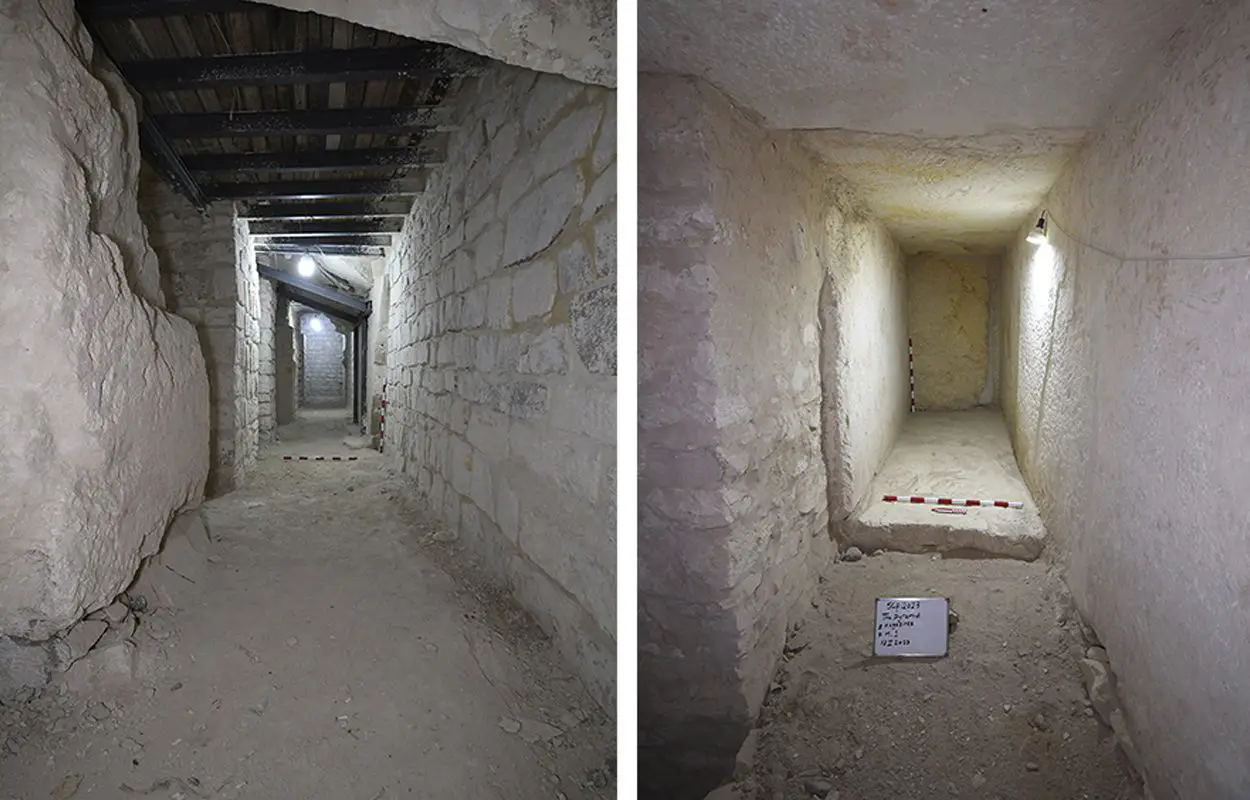An Egyptian-German archaeological mission has discovered several new chambers in the pyramid of Sahura, located in the Abu Sir Pyramid Field south of Giza.
Sahura, meaning “He who is close to Re”, was a pharaoh of Ancient Egypt and the second ruler of the Fifth Dynasty (2465 BC to 2325 BC). Sahure’s reign is seen as one of economic and cultural prosperity, opening new trading links to the land of Punt and expanding the flow of goods from the Levantine coast.
Choosing not to follow the tradition of being buried in the royal necropolises of Saqqara and Giza, Sahura instead chose for his pyramid to be constructed at Abusir. Although smaller in size than the pyramids of his predecessors, Sahura’s pyramid complex was decorated with over 10,000 m2 of finely carved reliefs, some of which are considered “unparalleled in Egyptian art.”
The interior chambers of the pyramid were extensively damaged by grave robbers during antiquity, making it impossible to precisely reconstruct the substructure plan.

A restoration project led by Egyptologist Dr. Mohamed Ismail Khaled of the Department of Egyptology at Julius-Maximilians-Universität of Würzburg (JMU) has discovered a series of storage chambers and passageways. The northern and southern parts of these chambers are badly damaged, however, remnants of the original walls and parts of the floor can still be seen.
Using 3D laser scanning with a ZEB Horizon portable LiDAR scanner, the team conducted detailed surveys to map the extensive external areas and the narrow corridors and chambers inside.
According to the researchers: “Careful documentation of the floor plan and dimensions of each storage chamber has greatly enhanced our understanding of the pyramid’s interior. During restoration, a balance between preservation and presentation was pursued to ensure the structural integrity of the chambers while making them accessible for future study and potentially the public.”
During the restoration work, the project was also able to uncover the floor plan of the antechamber which had deteriorated over time. Consequently, the destroyed walls were replaced with new retaining walls. The eastern wall of the antechamber was badly damaged, and only the northeast corner and about 30 centimetres of the eastern wall were still visible.
Header Image – Pyramid of Sahura – Public Domain





